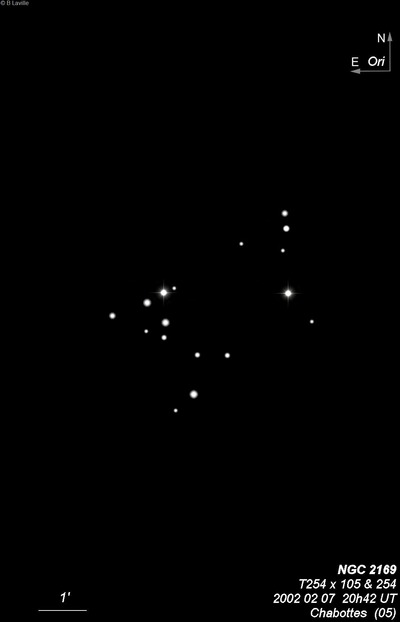
William Herschel discovered NGC 2169 = H VIII-24 = h379 on 15 Oct 1784 (sweep 293) and recorded as "a small cluster of pretty large white stars, prettily arranged, not many of them." On 24 Dec 1786 (sweep 662) he noted "a cl of brilliant stars, not many in number, but pretty much compressed; with a vacancy in the middle."
By analyzing William Herschel's early "reviews" of bright stars (before his systematic sweeps), which resulted in the discovery of many double stars, Wolfgang Steinicke found that Herschel first discovered the cluster on 12 Oct 1782 using his 6.2" reflector.
400/500mm - 17.5" (1/19/91): 20 stars mag 7.5-13 in bright, distinctive group. Fairly small, about 6' diameter, not rich. The stars are divided into two main subgroups - along the west side is a string of six stars aligned N-S in a very shallow "V" asterism. The northern two stars in this string form the wide double ∑844 = 8.8/9.9 at 24" and less than 2' S is mag 8.7 SAO 95271. The eastern subgroup consists of 9 stars forming a distinctive triangle outline and includes the close double star ∑848 = 7.5/8.0 at 2.5". The brighter stars form a fairly distinctive "37" pattern! Located 0.9 degrees WSW of Xi Orionis.
Notes by Steve Gottlieb